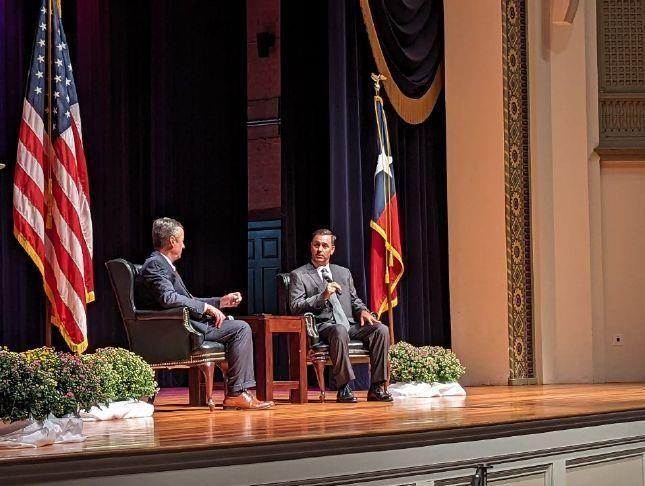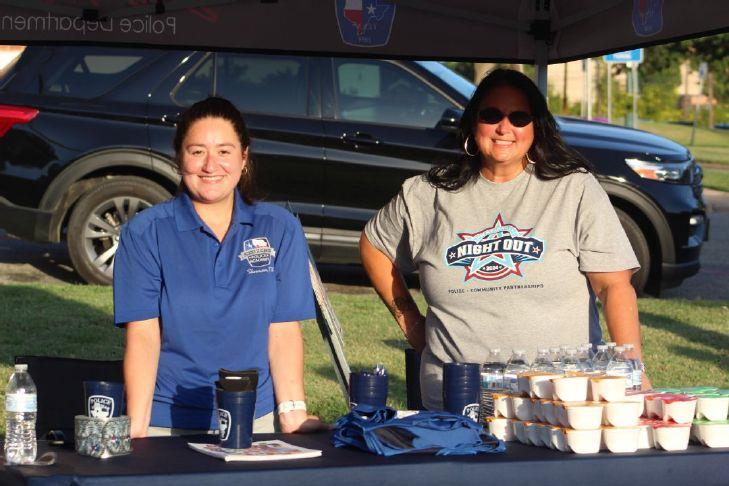There are five things that people should keep in mind during what can be a very active weather season in North Texas and Southern Oklahoma.
1. Preparation is key to living with the threat of severe weather while enjoying all of the fun that spring brings.
Grayson County Emergency Director Sarah Somers said some of the most dangerous storms happen at night, but deadly thunderstorms can happen any time of the day or night.
“To know when danger is closest to you, it is best to be in enrolled in an advanced warning system such as CodeRED,” Somers said.
CodeRED is an automated system that uses street addresses to send out emergency notifications to people in the path of a storm. But people have to register their devices to get those notifications.
Somers said there are several important things people need to know about CodeRed.
Saving the CodeRED 800 phone numbers in your phone contacts can help you recognize these critical calls when they are issued.
“If you miss the call, you can always just call back the CodeRED number that called you — the last messaged issued for your enrolled address will replay,” Somers said. “If you are afraid your enrollment isn’t active, or if your Grayson County address changes, just re-enroll today! The system will match your phone number to any pre-existing phone number and update the record. You won’t get two calls!”
An “Opt Out” option is available on the county website. Those who can’t use the internet there is there is a help desk as close as a phone at 903-813-4231.
“Our system is shared and used by Grayson County and all of its sixteen cities,” Somers said. “No matter where you live or work in our county, please enroll if you haven’t already. When landline phones were a thing, we were able to import all of those numbers from the 9-1-1 database. Now, in 2025, most folks use a wireless or VOIP telephone and the only way we can get you enrolled is if you go to our website or call our help desk and take that proactive step.”
The severe weather notices from CodeRED come from a satellite feed directly from the National Weather Service but you have to opt in for those.
“Otherwise, you will just receive notices initiated from our Emergency Operations Center such as boil water notices, evacuations notices due to wildfire, etc.” she said.
“Make sure to include weather awareness in your parent-taught drivers’ education of young drivers! As part of that education, help them to enroll for alerts before a license is granted. And we’d really appreciate residents helping spread the word about CodeRED to their new neighbors.”
To register for CodeRED in Grayson County, go to the county’s Emergency Management webpage at https://co.grayson.tx.us/page/oem.cred and follow the instructions from there.
2. Know the difference between the different watches and warnings.
When a watch issued, start planning how they are going to deal with hazardous weather should it arise.
This might mean moving those outdoor plans indoors or it might mean planning a route to safety in an outdoor venue.
At home, it could mean plugging in electronics to charge in case there is a power outage and making sure flashlights and other devices have batteries and are easily accessible.
It is not a time to worry, but a time to plan.
A warning means severe weather is imminent and you need to take cover now.
This is not the time to be rounding up supplies. It is the time to find safe shelter until the storm passes.
3. “Turn around, don’t drown” is more than a slogan.
Many people don’t realize just how little water it can take to become a huge problem. The National Weather Service says that as little as six inches of fast-moving water can knock a person off their feet.
Nearly half of all flash flood fatalities occur in vehicles so it is imperative that people not drive through water covered roadways.
Do not drive around road barriers as they are put there to save lives.
It is often impossible to know the depth of the water over the road or the condition of the road under the water.
4.You don’t have to see lightening to die from it.
If you can hear thunder, you are in danger from lightening.
To keep safe if a thundercloud is nearby, pay attention to changing conditions. If you hear thunder get off of outside elevated surfaces such as hills or ridges and take shelter in a building or car.
Do not shelter under a tree. Get out of and away from ponds, lakes, pools and other sources of water.
5.Tornadoes can form in an instant and can be most dangerous at night.
If there is a tornado watch in your area, stay weather aware by listening to local weather reports on local news or NOAA Weather Radio.
If you hear a warning issued, immediately go to a safe location such as storm shelter, basement or an inside room on the lowest floor within a shelter.
Stay away from windows and doors and outside walls. If you are in a car, do not seek safety under an overpass or bridge.



